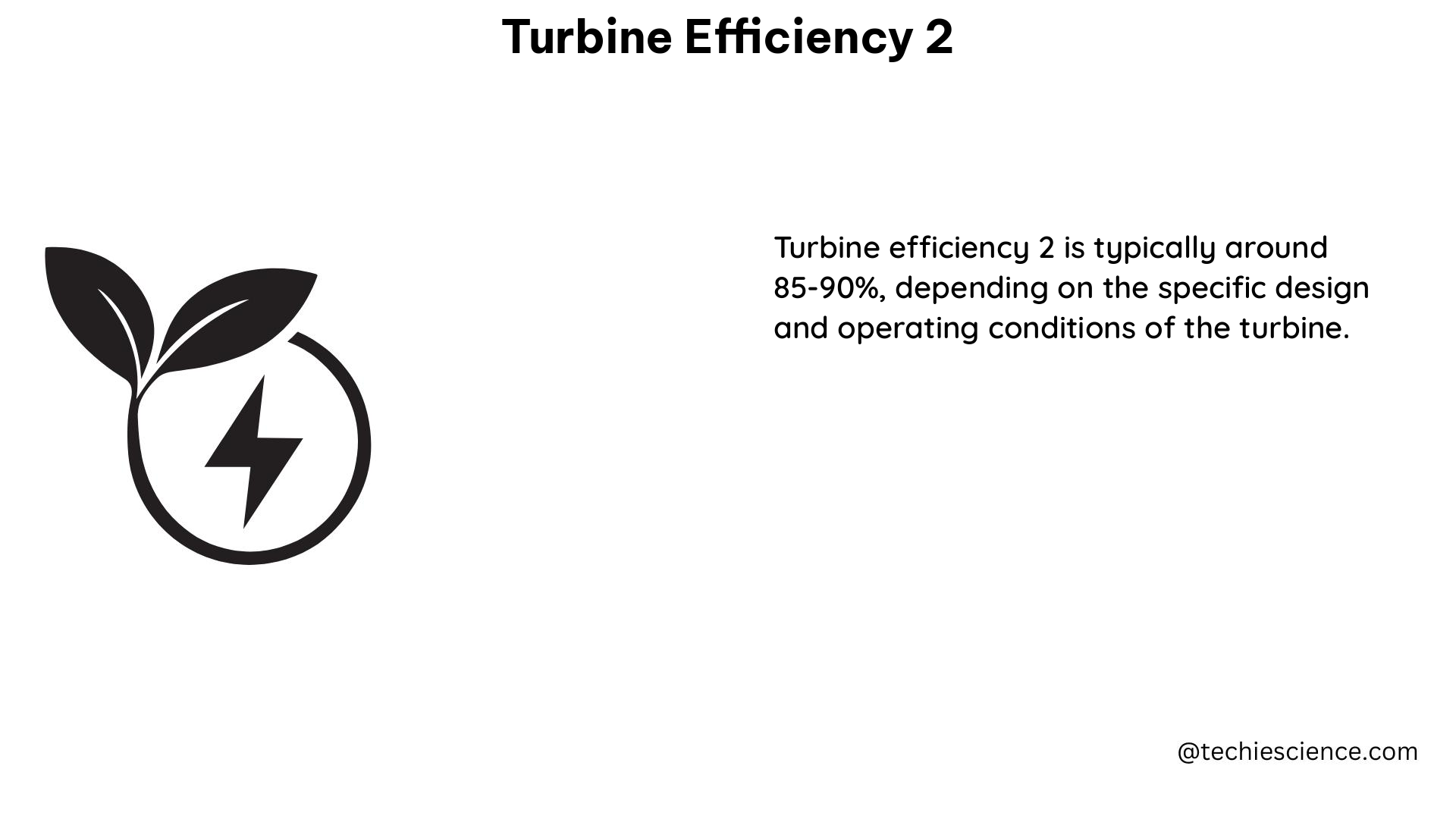Turbine efficiency 2, also known as the productive efficiency metric, is a crucial measure of a wind turbine’s performance that takes into account the entire valid wind spectrum, from the cut-in wind speed to the cut-out wind speed. This metric provides a more comprehensive assessment of a turbine’s efficiency compared to the peak power coefficient, as it integrates over a wider range of wind speeds.
Understanding Turbine Efficiency 2
Turbine efficiency 2 is calculated using data from wind turbine control systems, such as supervisory control and data acquisition (SCADA) systems, and field measurements. The data used in the calculation includes:
- Wind speed: The wind speed at the turbine’s hub height.
- Standard deviation of wind speeds: The variability of wind speeds, which can impact turbine performance.
- Pitch positions of the blades and the pitch reference: The angle of the turbine blades, which affects power generation.
- Yaw position: The orientation of the turbine relative to the wind direction.
- Generator RPM: The rotational speed of the generator, which is linked to power output.
- Main shaft RPM: The rotational speed of the turbine’s main shaft, which drives the generator.
- Power output: The electrical power generated by the turbine at a specific height.
Calculating Turbine Efficiency 2

To calculate the productive efficiency, the raw performance data of the turbine is first cleaned to remove outliers. This is an essential step to ensure the accuracy of the calculations. Next, a deep neural network (DNN) model is used to estimate the age-related performance degradation of the turbine based on the cleaned data.
The efficiency index for quantifying the age-related performance deficit is defined as the ratio of the actual power output of the turbine to the predicted power output based on the DNN model. This index provides a quantitative measure of the turbine’s performance degradation over time.
The formula for calculating the turbine efficiency 2 is:
Turbine Efficiency 2 = (Actual Power Output) / (Predicted Power Output)
where the predicted power output is based on the DNN model’s estimation of the turbine’s performance.
Advantages of Turbine Efficiency 2
Turbine efficiency 2 has several advantages over the peak power coefficient:
- Wider Wind Spectrum Coverage: Turbine efficiency 2 takes into account the entire valid wind spectrum, from the cut-in wind speed to the cut-out wind speed, providing a more comprehensive assessment of the turbine’s performance.
- Sensitivity to Performance Changes: The productive efficiency metric is more sensitive in measuring a turbine’s performance change than the peak power coefficient, as it integrates over a wider range of wind speeds.
- Age-related Performance Degradation Estimation: The efficiency index derived from the turbine efficiency 2 calculation can be used to estimate the age-related performance degradation of the turbine, which is crucial for maintenance and optimization strategies.
Practical Applications of Turbine Efficiency 2
Turbine efficiency 2 has several practical applications in the wind energy industry:
- Performance Monitoring: The productive efficiency metric can be used to continuously monitor the performance of wind turbines, allowing for early detection of performance degradation and the implementation of preventive maintenance strategies.
- Turbine Optimization: By analyzing the turbine efficiency 2 data, wind farm operators can identify opportunities to optimize turbine performance, such as adjusting blade pitch, yaw, or other operational parameters.
- Asset Management: The efficiency index derived from the turbine efficiency 2 calculation can be used to inform asset management decisions, such as the timing of major component replacements or the need for repowering.
- Benchmarking and Comparison: Turbine efficiency 2 can be used to benchmark the performance of different turbine models or wind farms, enabling more informed decision-making in turbine selection and wind farm development.
Conclusion
Turbine efficiency 2, or the productive efficiency metric, is a comprehensive measure of a wind turbine’s performance that takes into account the entire valid wind spectrum. By using data from wind turbine control systems and field measurements, this metric provides a more sensitive and accurate assessment of a turbine’s performance compared to the peak power coefficient. The practical applications of turbine efficiency 2 in performance monitoring, turbine optimization, asset management, and benchmarking make it a valuable tool for wind farm operators and the broader wind energy industry.
Reference:
- Ding, Y., Barber, S., & Hammer, F. (2022). Data-Driven wind turbine performance assessment and quantification using SCADA data and field measurements. Frontiers in Energy Research, 10, 1050342. doi: 10.3389/fenrg.2022.1050342
- NREL Annual Technology Baseline. (n.d.). Retrieved from https://www.nrel.gov/wind/data-tools.html
- Yang, J., Zhang, L., Chang, Y., Hao, Y., Liu, G., Zhao, Q., & Yan, Y. (2020). Understanding the material efficiency of the wind power sector in China: A spatial-temporal assessment. Journal of Cleaner Production, 245, 118882. doi: 10.1016/j.jclepro.2019.118882
- A production economics analysis for quantifying the efficiency of wind turbines. (2017). Wind Energy, 20(4), 859-871. doi: 10.1002/we.2105
- Estimation of Wind Turbine Performance Degradation with Deep Learning. (2022). Proceedings of the 7th European Conference of the Prognostics and Health Management Society 2022, 352-357. doi: 978-1-936263-36-3

The lambdageeks.com Core SME Team is a group of experienced subject matter experts from diverse scientific and technical fields including Physics, Chemistry, Technology,Electronics & Electrical Engineering, Automotive, Mechanical Engineering. Our team collaborates to create high-quality, well-researched articles on a wide range of science and technology topics for the lambdageeks.com website.
All Our Senior SME are having more than 7 Years of experience in the respective fields . They are either Working Industry Professionals or assocaited With different Universities. Refer Our Authors Page to get to know About our Core SMEs.